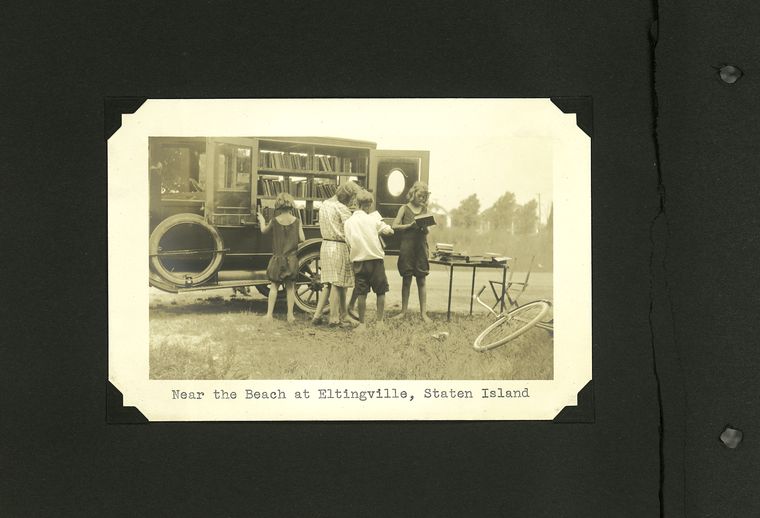For Teachers
Past Online Summer Reading Programs at NYPL

Today academic research backs up what librarians seem to have known all along: reading over the summer helps children—a lot. If kids don't read during the summer months they lose many of the skills they learned during the previous school year. The problem is often called “summer slump,” “summer set back” or “summer slide.” It's a costly, time-consuming proposition for schools to have to re-teach those skills after each summer. Here are some highlights of the academic research on this topic:
- Students from both better-off and disadvantaged backgrounds made similar achievement gains during the school year. However, during the summer the disadvantaged youth fell significantly behind in reading. (Alexander et al., 2007)
- Studies show that students’ who read more, read better; they also write better, spell better, have larger vocabularies, and have better control of complex grammatical constructions (Krashen, 2009)
- The amount of reading done out of school is consistently related to gains in reading achievement. (National Institute of Education, 1988)
- Regardless of other activities, the best predictor of summer loss or summer gain is whether or not a child reads during the summer.” (McGill-Franzen and Allington, 2003)
- More than any other public institution, including the schools, the public library contributed to the intellectual growth of children during the summer. (Barbara Heyn, 1978)
(There’s actually an entire Master’s Degree paper online, A History of Youth Summer Reading Programs in Public Libraries, that traces their development from 1895-2004 by Stephanie Bertin.)
In the 1990s libraries began putting much of their summer reading material on the web. The websites started with simple book lists and quickly developed into central registration systems for all participants. These sites allowed libraries to easily track their levels of participation and enabled users to record their reading on-line.
1996-2004 THE EARLY DAYS: KIDS.NYPL.ORG & SUMMERREADING.NYPL.ORG

1996 Summer Reading on kids.nyp.org. One of the first online summer reading sites. It presented the annual graded booklist.

By 2001 Summer Reading had earned it’s own NYPL sub-domain “summerreading.nypl.org” and contained a collection of games to entice users to read the featured books.

In 2003 an online bulletin board automated user registrations and book reviews. Users would declare their own summer reading goals and each week the number of pages read by users would be totaled and displayed. This log-and-review format is now the standard model for summer reading websites across the country.
2005-2009 NYC COLLABORATION: SUMMERREADING.ORG
In 2005 the Wallace Foundation gave a generous grant to the three New York City Public Libraries – The New York Public Library, Brooklyn Public Library and Queens Library focusing on out-of-school time learning for young people. One of the goals was to create a cooperative environment for NYC’s 3 library systems. Each library system took the lead on one of three major projects shared across the systems. NYPL developed homeworkNYC.org. Brooklyn Public Library designed a staff-training program for youth services. Queens Library coordinated and hosted summerreading.org for use by all of New York City.

This type of multi-system site and now statewide collaboration on summer reading websites has become a national model.
We've totally redesigned the 2010 summerreading.org website with lots of new gaming and social networking components. Read about summerreading.org 2010 here.
Read E-Books with SimplyE
 With your library card, it's easier than ever to choose from more than 300,000 e-books on SimplyE, The New York Public Library's free e-reader app. Gain access to digital resources for all ages, including e-books, audiobooks, databases, and more.
With your library card, it's easier than ever to choose from more than 300,000 e-books on SimplyE, The New York Public Library's free e-reader app. Gain access to digital resources for all ages, including e-books, audiobooks, databases, and more.
If you don’t have an NYPL library card, New York State residents can apply for a digital card online or through SimplyE (available on the App Store or Google Play).
Need more help? Read our guide to using SimplyE.